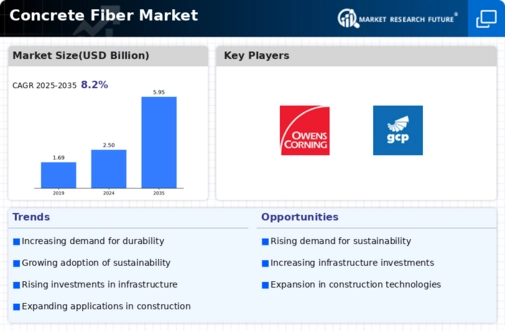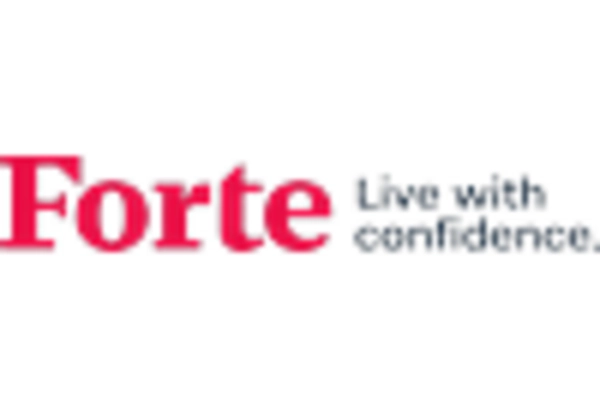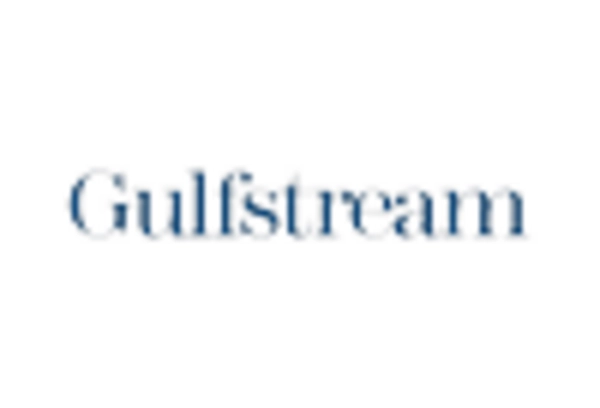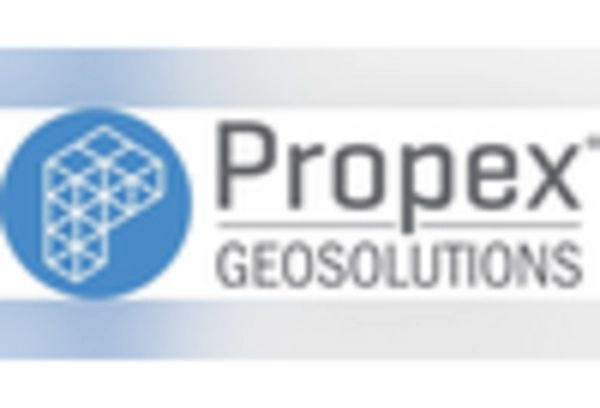-
Executive Summary
-
Scope of the Report
-
Market Definition
-
Scope of the Study
- Assumptions & Limitations
-
Research Objectives
-
Markets Structure
-
Market Research Methodology
-
Research
-
Process
-
Primary Research
-
Secondary Research
-
Forecast Model
-
Market Landscape
-
Supply Chain Analysis
- Manufacturers/Producers
- End-Use
- Threat of New Entrants
- Bargaining Power of Suppliers
- Intensity of Competitive Rivalry
-
Raw Materials Suppliers
-
Distributors/Retailers/Wholesalers/E-Commerce Merchants
-
Porter’s Five Forces Analysis
-
Bargaining Power of Buyers
-
Threat of Substitutes
-
Industry Overview of the Global Concrete Fibers Market
-
Introduction
-
Drivers
-
Restraints
-
Opportunities
-
Challenges
-
Market Trends
-
Introduction
-
Growth Trends
-
Impact Analysis
-
Global Concrete Fibers Market, by Type
-
Introduction
-
Synthetic Fiber
- Market Estimates &
- Market Estimates & Forecast, by Region,
-
Forecast, 2025−2034
-
Steel Fiber
- Market Estimates &
- Market Estimates & Forecast, by Region,
-
Forecast, 2025−2034
-
Natural Fiber
- Market Estimates &
- Market Estimates & Forecast, by Region,
-
Forecast, 2025−2034
-
Basalt Fiber
- Market Estimates &
- Market Estimates & Forecast, by Region,
-
Forecast, 2025−2034
-
Others
- Market Estimates & Forecast,
- Market Estimates & Forecast, by Region, 2025−2034
-
Global Concrete Fibers Market, by End-Use Industry
-
Introduction
- Market Estimates & Forecast, 2025−2034
-
Building & Construction
-
Market Estimates & Forecast, by Region, 2025−2034
-
Mining
- Market Estimates & Forecast, 2025−2034
-
& Tunnel
-
Market Estimates & Forecast, by Region, 2025−2034
-
Industrial
- Market Estimates & Forecast, 2025−2034
-
Flooring
-
Market Estimates & Forecast, by Region, 2025−2034
-
Transport
- Market Estimates
-
Market Estimates & Forecast, 2025−2034
-
& Forecast, by Region, 2025−2034
-
Others
- Market Estimates
-
Market Estimates & Forecast, 2025−2034
-
& Forecast, by Region, 2025−2034
-
Global Concrete Fibers Market,
-
by Region
-
Introduction
-
North America
- Market Estimates
- Market Estimates & Forecast
- US
- Canada
-
Market Estimates & Forecast, 2025−2034
-
& Forecast by Type, 2025−2034
-
by End-Use Industry, 2025−2034
-
Estimates & Forecast, 2025−2034
-
Forecast by Type, 2025−2034
-
by End-Use Industry, 2025−2034
-
Estimates & Forecast, 2025−2034
-
Forecast by Type, 2025−2034
-
by End-Use Industry, 2025−2034
-
Europe
- Market
- Market Estimates &
- Market Estimates & Forecast
- Germany
- France
- Italy
- Spain
- UK
- Russia
- Netherlands
- Rest of Europe
-
Estimates & Forecast, 2025−2034
-
Forecast by Type, 2025−2034
-
by End-Use Industry, 2025−2034
-
Estimates & Forecast, 2025−2034
-
Forecast by Type, 2025−2034
-
by End-Use Industry, 2025−2034
-
Estimates & Forecast, 2025−2034
-
Forecast by Type, 2025−2034
-
by End-Use Industry, 2025−2034
-
Estimates & Forecast, 2025−2034
-
Forecast by Type, 2025−2034
-
by End-Use Industry, 2025−2034
-
Estimates & Forecast, 2025−2034
-
Forecast by Type, 2025−2034
-
by End-Use Industry, 2025−2034
-
Estimates & Forecast, 2025−2034
-
Forecast by Type, 2025−2034
-
by End-Use Industry, 2025−2034
-
Estimates & Forecast, 2025−2034
-
Forecast by Type, 2025−2034
-
by End-Use Industry, 2025−2034
-
Market Estimates & Forecast, 2025−2034
-
& Forecast by Type, 2025−2034
-
Forecast by End-Use Industry, 2025−2034
-
Market Estimates & Forecast, 2025−2034
-
& Forecast by Type, 2025−2034
-
Forecast by End-Use Industry, 2025−2034
-
Asia-Pacific
- Market Estimates
- Market Estimates & Forecast
- China
- India
- Japan
- Australia
- Malaysia
- South Korea
- Rest of Asia Pacific
-
Market Estimates & Forecast, 2025−2034
-
& Forecast by Type, 2025−2034
-
by End-Use Industry, 2025−2034
-
Estimates & Forecast, 2025−2034
-
Forecast by Type, 2025−2034
-
by End-Use Industry, 2025−2034
-
Estimates & Forecast, 2025−2034
-
Forecast by Type, 2025−2034
-
by End-Use Industry, 2025−2034
-
Estimates & Forecast, 2025−2034
-
Forecast by Type, 2025−2034
-
by End-Use Industry, 2025−2034
-
Market Estimates & Forecast, 2025−2034
-
& Forecast by Type, 2025−2034
-
Forecast by End-Use Industry, 2025−2034
-
Market Estimates & Forecast, 2025−2034
-
& Forecast by Type, 2025−2034
-
9.4.10.5Market Estimates &
-
Forecast by End-Use Industry, 2025−2034
-
Market Estimates & Forecast, 2025−2034
-
& Forecast by Type, 2025−2034
-
Forecast by End-Use Industry, 2025−2034
-
Market Estimates & Forecast, 2025−2034
-
& Forecast by Type, 2025−2034
-
9.4.12.5Market Estimates &
-
Forecast by End-Use Industry, 2025−2034
-
Middle East & Africa
- Market Estimates
- Market Estimates & Forecast
- Saudi Arabia
- UAE
- Africa
- Rest of the Middle
-
Market Estimates & Forecast, 2025−2034
-
& Forecast by Type, 2025−2034
-
by End-Use Industry, 2025−2034
-
Market Estimates & Forecast, 2025−2034
-
& Forecast by Type, 2025−2034
-
Forecast by End-Use Industry, 2025−2034
-
Market Estimates & Forecast, 2025−2034
-
& Forecast by Type, 2025−2034
-
Forecast by End-Use Industry, 2025−2034
-
Market Estimates & Forecast, 2025−2034
-
& Forecast by Type, 2025−2034
-
9.5.8.5Market Estimates &
-
Forecast by End-Use Industry, 2025−2034
-
East & Africa
-
Market Estimates & Forecast by Type, 2025−2034
-
Estimates & Forecast by End-Use Industry, 2025−2034
-
Latin
- Market Estimates & Forecast, 2025−2034
- Market
- Brazil
- Argentina
- Mexico
- Rest of Latin America
-
America
-
Market Estimates & Forecast by Type, 2025−2034
-
Estimates & Forecast by End-Use Industry, 2025−2034
-
Market Estimates & Forecast, 2025−2034
-
& Forecast by Type, 2025−2034
-
Forecast by End-Use Industry, 2025−2034
-
Market Estimates & Forecast, 2025−2034
-
& Forecast by Type, 2025−2034
-
Forecast by End-Use Industry, 2025−2034
-
Market Estimates & Forecast, 2025−2034
-
& Forecast by Type, 2025−2034
-
Forecast by End-Use Industry, 2025−2034
-
Market Estimates & Forecast, 2025−2034
-
& Forecast by Type, 2025−2034
-
Forecast by End-Use Industry, 2025−2034
-
Competitive Landscape
-
Introduction
-
Market Key Strategies
-
Key Development
-
Analysis
-
(Expansions/Mergers & Acquisitions/Joint Ventures/New Type
-
Developments/Agreements/Investments)
-
Company Profiles
-
BASF SE
-
Film Type/Business Segment Overview
-
SWOT Analysis
-
Company Overview
-
Segment Overview
-
Key Strategies
-
Overview
-
Segment Overview
-
Key Strategies
-
Financial Updates
-
Key Developments
-
Sika AG
-
Film Type/Business Segment Overview
-
SWOT Analysis
-
Company Overview
-
Segment Overview
-
Key Strategies
-
Overview
-
Segment Overview
-
Key Strategies
-
Overview
-
Segment Overview
-
Key Strategies
-
Financial Updates
-
Key Developments
-
GCP Applied Technologies Inc
-
Financial Updates
-
Key Developments
-
Conclusion
-
Company Overview
-
Financial Updates
-
Key Developments
-
Key Strategies
-
Nycon
- Financial Updates
- Film Type/Business
- Key Developments
- SWOT Analysis
-
The Euclid Chemical Company
- Company
- Financial Updates
- Film Type/Business
- Key Developments
- SWOT Analysis
-
Owens Corning
- Company Overview
- Film Type/Business Segment Overview
- SWOT Analysis
- Key Strategies
- Company Overview
- Financial Updates
- Key Developments
- Key Strategies
-
Bosfa
- Financial Updates
- Film Type/Business
- Key Developments
- SWOT Analysis
-
Propex Operating Company, LLC.
- Company
- Financial Updates
- Film Type/Business
- Key Developments
- SWOT Analysis
-
ABC Polymer Industries, LLC
- Company
- Financial Updates
- Film Type/Business
- Key Developments
- SWOT Analysis
-
Helix Steel
- Company Overview
- Film Type/Business Segment Overview
- SWOT Analysis
- Key Strategies
- Company Overview
- Film Type/Business Segment Overview
- SWOT Analysis
- Key Strategies
-
LIST OF TABLES
-
Table
-
Global Concrete Fibers Market, by Region, 2025−2034
-
North
-
America: Concrete Fibers Market, by Country, 2025−2034
-
Europe:
-
Concrete Fibers Market, by Country, 2025−2034
-
Asia-Pacific:
-
Concrete Fibers Market, by Country, 2025−2034
-
Middle East
-
& Africa: Concrete Fibers Market, by Country, 2025−2034
-
Table
-
Latin America: Concrete Fibers Market, by Country, 2025−2034
-
Table
-
Concrete Fibers, Type Market, by Region, 2025−2034
-
North
-
America: Concrete Fibers, Type Market, by Country, 2025−2034
-
Table
-
Europe: Concrete Fibers, Type Market, by Country, 2025−2034
-
Table
-
Asia-Pacific: Concrete Fibers, Type Market, by Country, 2025−2034
-
Table
-
Middle East & Africa: Concrete Fibers, Type Market, by Country, 2025−2034
-
Table
-
Latin America: Concrete Fibers, Type Market, by Country, 2025−2034
-
Table
-
Concrete Fibers End-Use Industry Market, by Region, 2025−2034
-
Table
-
North America: Concrete Fibers, End-Use Industry Market, by Country, 2025−2034
-
Table
-
Europe: Concrete Fibers, End-Use Industry Market, by Country, 2025−2034
-
Table
-
Asia-Pacific Concrete Fibers, End-Use Industry Market, by Country, 2025−2034
-
Table
-
Middle East & Africa: Concrete Fibers, End-Use Industry Market, by Country,
-
Latin America: Concrete Fibers, End-Use Industry
-
Market, by Country, 2025−2034
-
Global Concrete Fibers, Type
-
Market, by Region, 2025−2034
-
Global Concrete Fibers, End-Use
-
Industry Market, by Region, 2025−2034
-
North America: Concrete
-
Fibers , Market, by Country, 2025−2034
-
North America: Concrete
-
Fibers, Market, by Type, 2025−2034
-
North America: Concrete
-
Fibers, Market, by End-Use Industry, 2025−2034
-
Europe Concrete
-
Fibers Market, by Country, 2025−2034
-
Europe Concrete Fibers
-
Market, by Type, 2025−2034
-
Europe Concrete Fibers Market,
-
by End-Use Industry, 2025−2034
-
Asia-Pacific Concrete Fibers
-
Market, by Country, 2025−2034
-
Asia-Pacific Concrete Fibers
-
Market, by Type, 2025−2034
-
Asia-Pacific Concrete Fibers
-
Market, by End-Use Industry, 2025−2034
-
Middle East &
-
Africa: Concrete Fibers Market, by Country, 2025−2034
-
Middle
-
East & Africa: Concrete Fibers Market, by Type, 2025−2034
-
Table
-
Middle East & Africa: Concrete Fibers Market, by End-Use Industry, 2025−2034
-
Table
-
Latin America: Concrete Fibers Market, by Country, 2025−2034
-
Table
-
Latin America: Concrete Fibers Market, by Type, 2025−2034
-
Table
-
Latin America: Concrete Fibers Market, by End-Use Industry, 2025−2034
-
LIST
-
OF FIGURES
-
Concrete Fibers Market Segmentation
-
FIGURE
-
Forecast Methodology
-
Porter’s Five Forces Analysis of
-
the Concrete Fibers Market
-
Supply Chain of the Concrete Fibers
-
Market
-
Share of the Concrete Fibers Market, by Country, 2020
-
(%)
-
Global Concrete Fibers Market, 2025−2034
-
FIGURE
-
Sub Segments of Type
-
Concrete Fibers Market Size, by Type,
-
Share of the Concrete Fibers Market, by Type, 2025−2034
-
FIGURE
-
Sub Segments of End-Use Industry
-
Concrete Fibers Market Size,
-
by End-Use Industry, 2020 (%)
-
Share of the Concrete Fibers Market,
-
by End-Use Industry, 2025−2034


















Leave a Comment